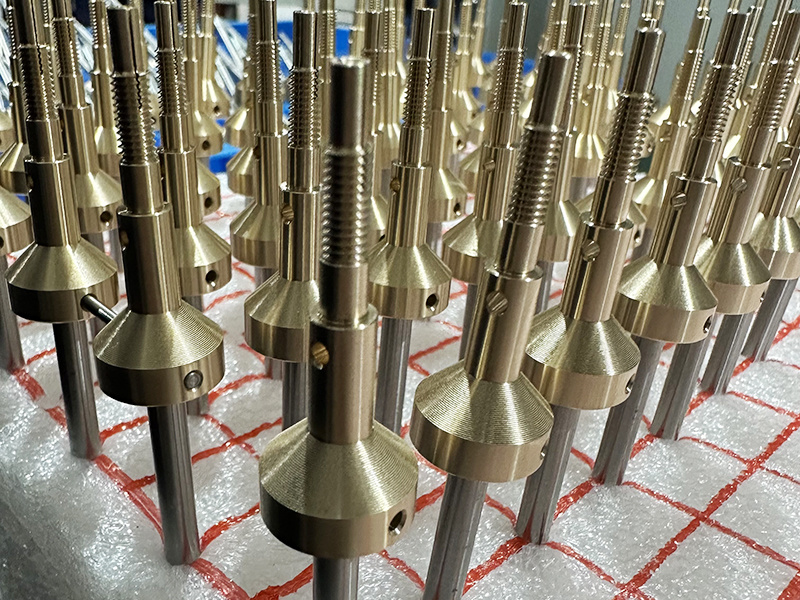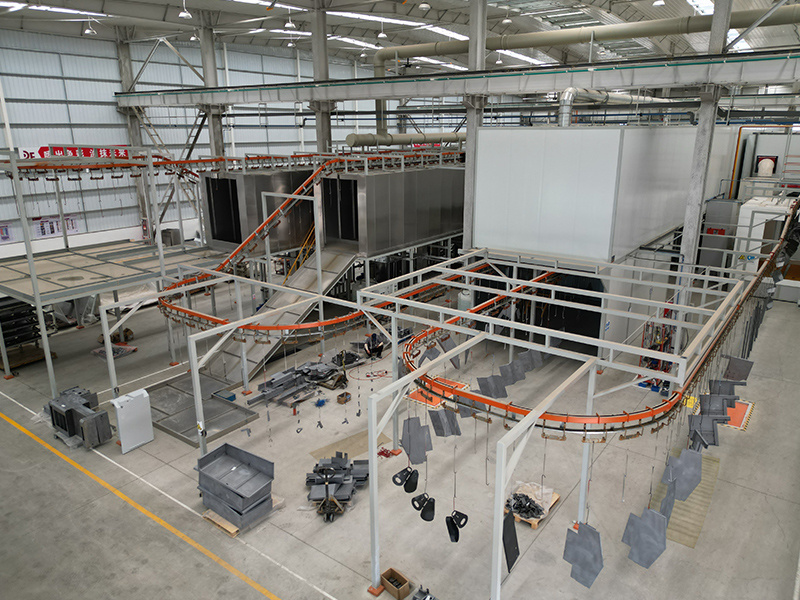What is the process flow of mechanical machining of parts?
Release Time:
Jul 23,2024
Part processing is the process of transforming raw materials into parts that meet manufacturing requirements. Below, we will introduce several common machining processes for parts.
Part processing is the process of transforming raw materials into parts that meet manufacturing requirements. Below, we will introduce several common machining processes for parts.
1. Lathe machining
Lathe is an important machine tool widely used in the processing of materials such as metals and plastics. The process flow of lathe machining is as follows:
(1) Material selection: Choose suitable materials based on the characteristics of the processed parts and the working environment.
(2) Cutting: Using a turning tool to cut materials into the desired shape.
(3) Turning appearance: Turning is carried out according to the external dimensions of the parts, and the motion trajectory and speed of the turning tool are controlled by the spindle and feed mechanism.
(4) Turning End Face: Using a lathe to rotate the workpiece to complete the machining of the end face.
(5) Inspection: Use measuring tools to inspect the parts and ensure that the machining results meet the requirements.
2. Milling machine processing
A milling machine is a machine tool used for machining various shapes of parts such as flat and curved surfaces. The process flow of milling machine processing is as follows:
(1) Material selection: Choose suitable materials based on the characteristics of the processed parts and the working environment.
(2) Cutting: Use a milling cutter to cut the material and process it into the desired shape.
(3) Inspection: Use measuring tools to inspect the parts and ensure that the machining results meet the requirements.
3. Machinist processing
Clamping machining is a fundamental metal processing technique primarily used for manufacturing irregularly shaped parts. The process flow of fitter machining is as follows:
(1) Material selection: Choose suitable materials based on the characteristics of the processed parts and the working environment.
(2) Cutting: Using manual or mechanical tools to cut materials into the desired shape.
(3) Drilling: Use equipment such as fitters and drilling carts for drilling and processing.
(4) Shaping: Using manual or mechanical tools to shape the surface of parts to achieve the required precision and quality.
(5) Welding: Processing of parts through single-sided welding, butt welding, corner welding, and other methods.
(6) Inspection: Use measuring tools to inspect the parts and ensure that the machining results meet the requirements.
4. Forging processing
Forging is a metal processing method that involves pressing and processing hot worked metal materials into the desired shape. The process flow of forging processing is as follows:
(1) Material selection: Choose suitable materials based on the characteristics of the processed parts and the working environment.
(2) Heat treatment: Heating metal raw materials to make them soft and easily deformed.
(3) Mold manufacturing: Design and manufacture corresponding molds based on the size and shape of the parts.
(4) Forging: Forging metal materials after hot processing using hammers or presses.
(5) Shaping: Trimming and shaping the forged parts to achieve the required precision and quality.
(6) Inspection: Use measuring tools to inspect the parts and ensure that the machining results meet the requirements.
5. Injection molding processing
Injection molding is a process of injecting melted plastic into a mold and producing the required parts after solidification. The process flow of injection molding is as follows:
(1) Selection: Choose suitable plastic raw materials according to the requirements of the parts.
(2) Feeding: Put plastic pellets into the injection molding machine for melting.
(3) Injection: Inject melted plastic into a mold.
(4) Cooling: Wait for the injected plastic to solidify in the mold.
(5) Demoulding: Open the mold and remove the solidified parts.
(6) Inspection: Use quality inspection equipment to inspect the parts and ensure that the processing results meet the requirements.
The above are several common machining processes for parts. In actual production, different processing methods and technological processes can also be selected according to different needs and working environments.
Key words:









